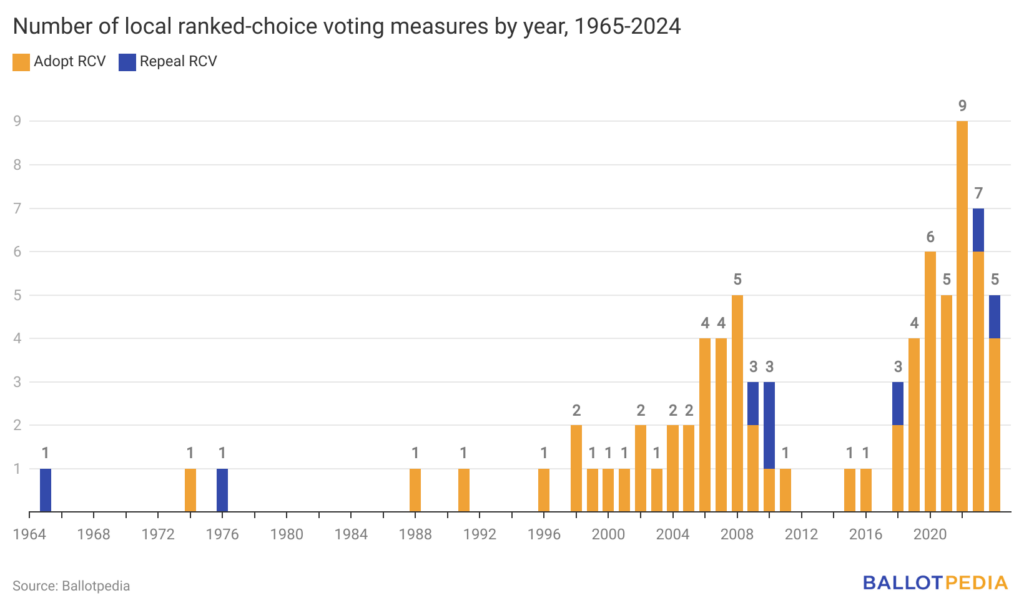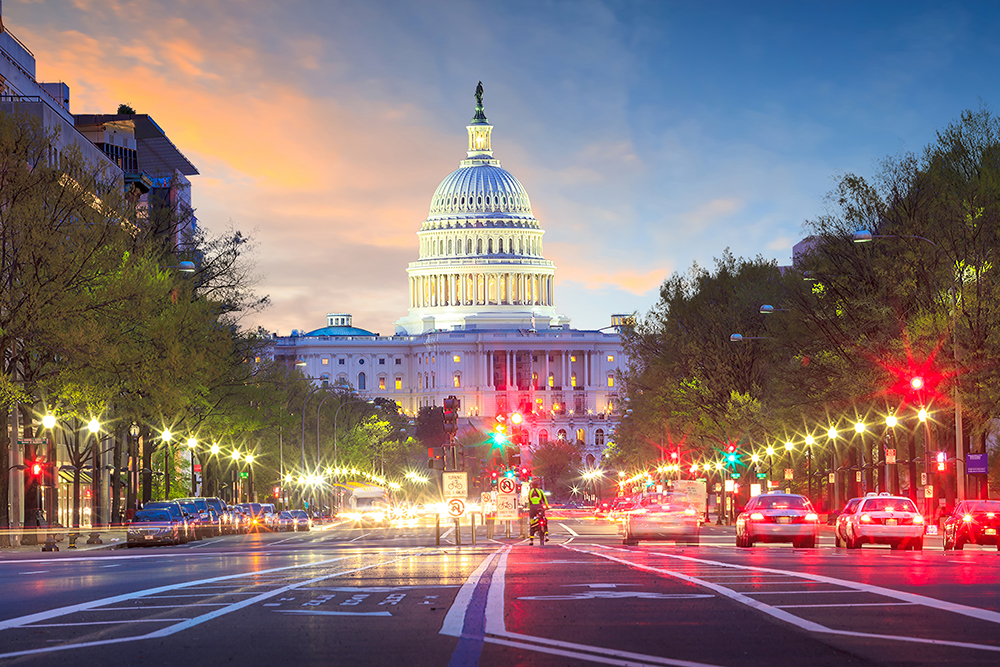Voters in five cities will decide local ballot measures related to ranked-choice voting (RCV) on Nov. 5.
Measures to adopt RCV are on the ballot in Richmond, California, and Oak Park, Illinois. The largest jurisdiction to vote on ranked-choice voting on Nov. 5 is the nation's capital, Washington, D.C.
Washington, D.C., Initiative 83 would establish ranked-choice voting for elections in Washington, D.C., beginning in 2026. Voters would be permitted to rank up to 5 candidates, including a write-in candidate. RCV would be used in federal elections, including the presidential election, and municipal elections. The ballot initiative would also change the district's primaries from being closed to semi-closed, meaning that unaffiliated voters would be allowed to vote in a political party's primary election.
In Peoria Township, Illinois, voters will decide on a nonbinding advisory question asking township voters if the state of Illinois should adopt ranked-choice voting. A measure to repeal RCV is on the ballot in Bloomington, Minnesota. RCV was approved by Bloomington voters in 2020, with 51.19% of voters in favor.
A ranked-choice voting system (RCV) is an electoral system in which voters rank candidates by preference on their ballots. Broadly speaking, the ranked-choice voting process unfolds as follows for single-winner elections:
- Voters rank the candidates for a given office by preference on their ballots.
- If a candidate wins an outright majority of first-preference votes (i.e., 50 percent plus one), he or she will be declared the winner.
- If, on the other hand, no candidates win an outright majority of first-preference votes, the candidate with the fewest first-preference votes is eliminated.
- All first-preference votes for the failed candidate are eliminated, and second-preference choices on these ballots are then counted as first-preference.
- A new tally is conducted to determine whether any candidate has won an outright majority of the ballots.
- The process is repeated until a candidate wins a majority of votes cast.
Between 1965 and 2023, 74 ranked-choice voting (RCV) local ballot measures were on the ballot in 54 jurisdictions in 18 states.
- California has had the most—12—local RCV ballot measures compared to other states.
- Colorado has had the second most—10—local RCV ballot measures.
- The year with the greatest number of local ranked-choice voting (RCV) measures on the ballot was 2022, when there were nine.
Historically, of the 67 local ballot measures to adopt RCV, 52 were approved and 5 were defeated, resulting in an approval rate of 78%.
Of seven local ballot measures to repeal RCV, 4 were approved and three were defeated, resulting in an approval rate of 57%.

Six states—Alaska, Colorado, Idaho, Missouri, Nevada, and Oregon—have certified ballot measures for Nov. 5 related to adopting, repealing, or pre-empting ranked-choice voting. This is the most RCV-related statewide ballot measures featured in a single year.
RCV is currently used statewide in Alaska and Maine, as well as in Hawaii for certain elections. Fourteen states contain localities that either use or are scheduled to begin using RCV in municipal elections, and 10 states have enacted legislation prohibiting the use of RCV in any elections.


